The vineyard
« Excellence owes nothing to chance; it results from the absolute requirement. »
Author unknown
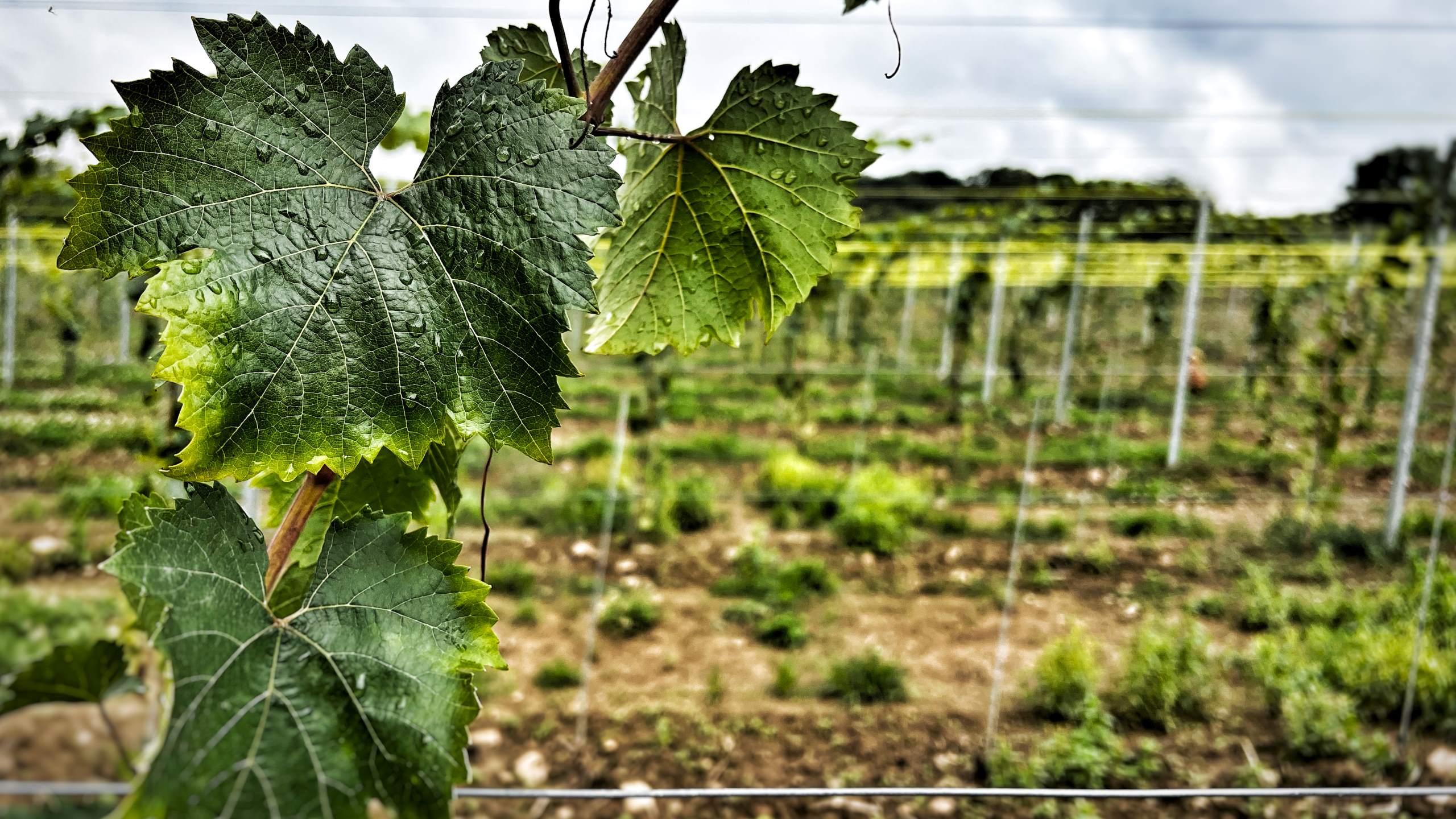
Grape varieties
The Domain’s specificities and the climate of our region being strongly similar to those of the Champagne region, we have chosen to work our future wines from two grape varieties: chardonnay and pinot noir.
Chardonnay is a white grape variety native to Burgundy. Our Domain provides it with limestone soils that it particularly appreciates. It has different characteristics depending on the soil’s composition and climate. Indeed, Chardonnay will be lively and mineral in countries with a cold environment, while it will be more supple in southern lands.
Pinot Noir is a grape variety that is well suited to the northern climate and can be found in wine-producing countries such as Germany, Switzerland, France (Burgundy and Champagne) and Belgium. Like Chardonnay, it also appreciates limestone soils. From pinot noir comes the production of structured red wines and Crémant d’Alsace.
Characteristics of the vineyard
The “Les IV Seigneurs” vineyard faces south, on the hillside overlooking the Sambre.
Cultivated on an exceptional terroir and gorged with sunshine as soon as the sun rises,
the conditions are ideal for producing a wine of the greatest finesse.
Location
The Domain is located in the locality with the same name, on the border of Flawinne and Floreffe. Flawinne is part of Namur, in the centre of Wallonia, Belgium. Two essential highways (E411 and E42) pass nearby to get there.
Grape varieties planted
65% Chardonnay
35% Pinot Noir
Area of the domain
Today, our vineyards cover 2.8 Hectares. Following acquiring additional land, 2.5 hectares should be planted in 2023. We are ready to continue the development in the years to come.
Production steps
Field preparation
Once the project was validated, we prepared the land (old fallow land) on which we were going to plant by carrying out the following steps: weeding, ploughing, collecting pebbles, vibroculture…
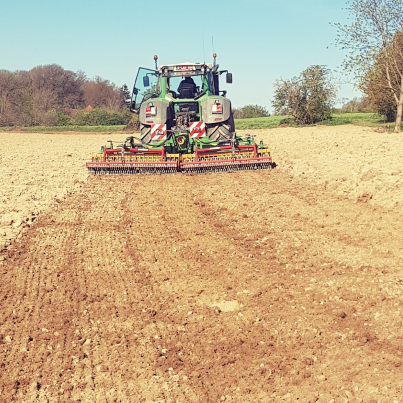
Planting
We then established a planting plan:
- 1 foot per meter,
- 2 meters 30 between the lines.
Our method differs from the Champagne method (+ or – 8,000 vines/ha) because we favour high trellising (foliage between 1 and 2 meters high).
A configuration characterized by several advantages:
- increased leaf area (photosynthesis, sunlight, evapotranspiration, etc.)
- time-saving by automating specific tasks.
On May 1, 2021, 10,669 plants were planted mechanically, using GPS, to obtain a perfect alignment of the plants and a homogeneous planting of the roots. This method, which may seem more expensive, guarantees the quality of planting and a good recovery.
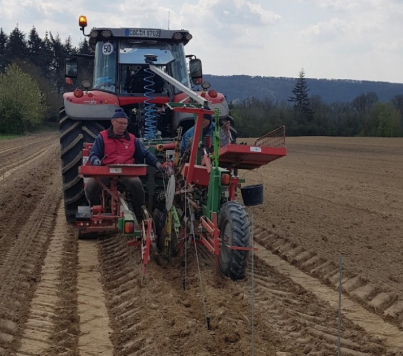
Watering
Once the plants have been planted, come watering concerns! The weather, as for any farmer, has become our biggest concern. We had anticipated a mass watering, but the rain finally arrived, never to leave us!
In September 2021, we installed the trellis.

Maintenance in the early years
The vine culture is very time-consuming. This liana, very voluntary, is “acrotone”.
It requires regular and rigorous pruning to control the production of fleshy bunches with a quality grape.
As soon as it takes over, the plant rejects from 2 to 4 shoots. We select the most vigorous to fix it to the stake and eliminate the others. It takes 2 or 3 passages in the whole plot to tie the shoots to the stakes, depending on their growth.
In March 2022, we pruned the vine at two eyes to provide good rooting. We also follow the shoot growth with the binding tool.
From 2023, we will prune to form the head under the first wire and keep two fruit-bearing rods.
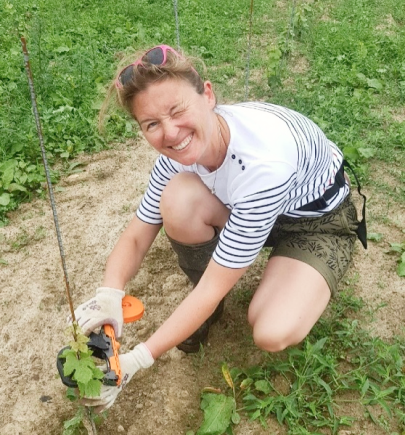
The annual maintenance
Every year, the same work is repeated, punctuated by the seasons. The vineyard wakes up in spring and intensifies our activity, whether it is for the work of the soil or the work of the vine.
- Soil work: starting, weeding, grassing, decompacting, leveling, burying green manure, etc.
- Work on the vine: disbudding, trellising (shoots on horizontal wires) and lifting of branches, trimming, leaf removal, treatment of the vine (oidium, mildew, etc.)
From June, with the flowering, the winegrower proceeds to the bracing (to bind the young branches against the wires) and the trimming (or topping) to contain the growth of the vine. If there are too many bunches, the vines must also be thinned out by removing the supernumerary bunches.
Of course, as soon as autumn arrives, the harvest takes place according to several factors, including the maturity level of the grapes.
From December, it is time to prune. For the minor plots, this can start in January but must be finished by the end of March at the latest because, as the saying goes: « Prune early, prune late, but prune in March!
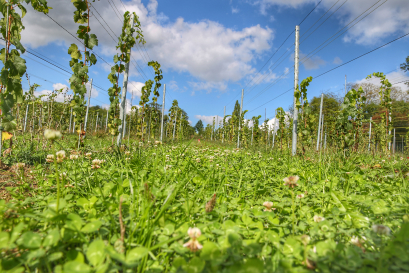
Discover our primeurs
The Domain ” Les IV Seigneurs ” needs your support to ensure the durability of this reasoned and passionate project, cultivated on land influenced by the history of its region.